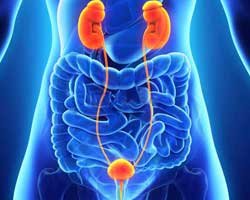
| Report Category | Indication Pipeline Reports |
Urinary tract infection (UTI) is an infection of bladder, urethra, ureter, and kidney. The most common symptom of the disease is burning sensation during urination.

| Report Category | Indication Pipeline Reports |
Prostatitis can be identified as an inflammatory condition causing pain in prostate gland. It is one of the most common problem related to urinary tract in men younger than 50 years.

| Report Category | Mechanism of Action Reports |
Mitochondria (singular: mitochondrion) are cytoplasmic organelles found in eukaryotic cells, such as plants, animals, fungi, and protists. The number of mitochondria present in a eukaryotic cell depend on the metabolic requirements of that cell; and ranges from a single large mitochondrion to thousands of the organelles.

| Report Category | Mechanism of Action Reports |
Wnt or β-Catenin signaling pathway plays a key role in the development of pluripotent cells and embryonic development. The pathway regulates cell-to-cell interaction, activates blastocyst, accelerates trophoblast development, accelerate chorion-allantois fusion and implantation.

| Report Category | Mechanism of Action Reports |
Epidermal growth factor receptors (EGFR) are a group of receptor tyrosine kinase (RTK) that plays a major role in cell proliferation, survival and differentiation. In most of the cancer, EGFR are amplified and overexpressed, due to dysregulation, resulting in cancer development.

| Report Category | Mechanism of Action Reports |
Interleukin receptors are a group of cytokine receptors that are expressed by leukocytes. Interleukin receptors play an important role in the functioning of the immune system.

| Report Category | Mechanism of Action Reports |
Interleukin 8 is a chemokine produced by various immune cells. They promote angiogenesis, proliferation and development of cancerous cells. The other diseases which are associated with interleukin 8 are depression, schizophrenia, bipolar disorder, migraine, Alzheimer’s disease, colitis, rheumatoid arthritis, multiple sclerosis, asthma, allergic rhinitis, psoriasis, eczema and others.

| Report Category | Mechanism of Action Reports |
RNA interference (RNAi) is a molecule type that silences the gene and limits the transcription of the mutated gene. Gene silencing is a novel mechanism that inactivates the transcripts of mutated gene, by activating sequence specific RNA degradation process.

| Report Category | Mechanism of Action Reports |
Rho kinase inhibitor, also known as ROCK inhibitor, inhibits the rho kinases, a family of small GTP-binding protein. Rho kinases are found to regulate cell motility, proliferation, shape, gene expression, apoptosis, and are also involved in the signalling pathway.

| Report Category | Mechanism of Action Reports |
Cell cycle inhibitors include cyclin inhibitors and cyclin-dependent kinases (CDKs), which plays major role in developing new class of anti-cancer therapies. Also, cell cycle inhibitors in combination with chemotherapy, overcome drug resistance and improve cytotoxic efficacy. CDKs are rational targets for cancer treatment, that could restore cell-cycle checkpoints and may induce apoptosis.

| Report Category | Mechanism of Action Reports |
Aurora kinase are proteins that function as mitotic regulators and are aberrantly expressed in cancerous cells. Aurora kinase inhibitors target these aberrantly expressed regulators, provides genetic stability and prevents tumorigenesis.

| Report Category | Mechanism of Action Reports |
Androgens are responsible for the development of male characteristics by binding to androgen receptors. Androgen receptor plays an important role in the development and progression of prostate cancer. Thus, it has been an attractive target for the clinical interventions and treatment of prostate cancer.

| Report Category | Launch Forecasting Landscape Reports |
Contepo is a novel, potentially first-in-class intravenous investigational antibiotic with a broad spectrum of Gram-negative and Gram-positive activity, including activity against most contemporary multi-drug resistant (MDR) strains, such as ESBL-producing Enterobacteriaceae.

| Report Category | Mechanism of Action Reports |
Akt, also known as PKB, is generally activated in several types of cancers such as breast, gastric, lung, ovary, and pancreatic cancer. Akt inhibitor prevent the functioning of activated form of Akt kinases. Akt kinases are also involved in promoting growth factor-mediated cells that mediates cell proliferation and inhibition of apoptosis through the inactivation of pro-apoptotic proteins, such as mouse double minute 2 homolog (MDM2) and Bcl-2 antagonist of cell death.

| Report Category | Indication Pipeline Reports |
Urea cycle disorders (UCDs) are an inborn error of metabolism, that occurs due to the deficiencies in any of the six enzymes and two transport proteins involved in urea biosynthesis. These disorders cause inborn errors in urea synthesis that lead to an accumulation of ammonia in blood and brain.

| Report Category | Indication Pipeline Reports |
Hyperoxaluria is a medical condition which involves increased oxalate in urine. The causes of hyperoxaluria include consumption of oxalate-rich foods, intestinal disorders and genetic disorders. The disease is categorized into different types which includes primary hyperoxaluria, enteric hyperoxaluria and hyperoxaluria related to eating high-oxalate foods.